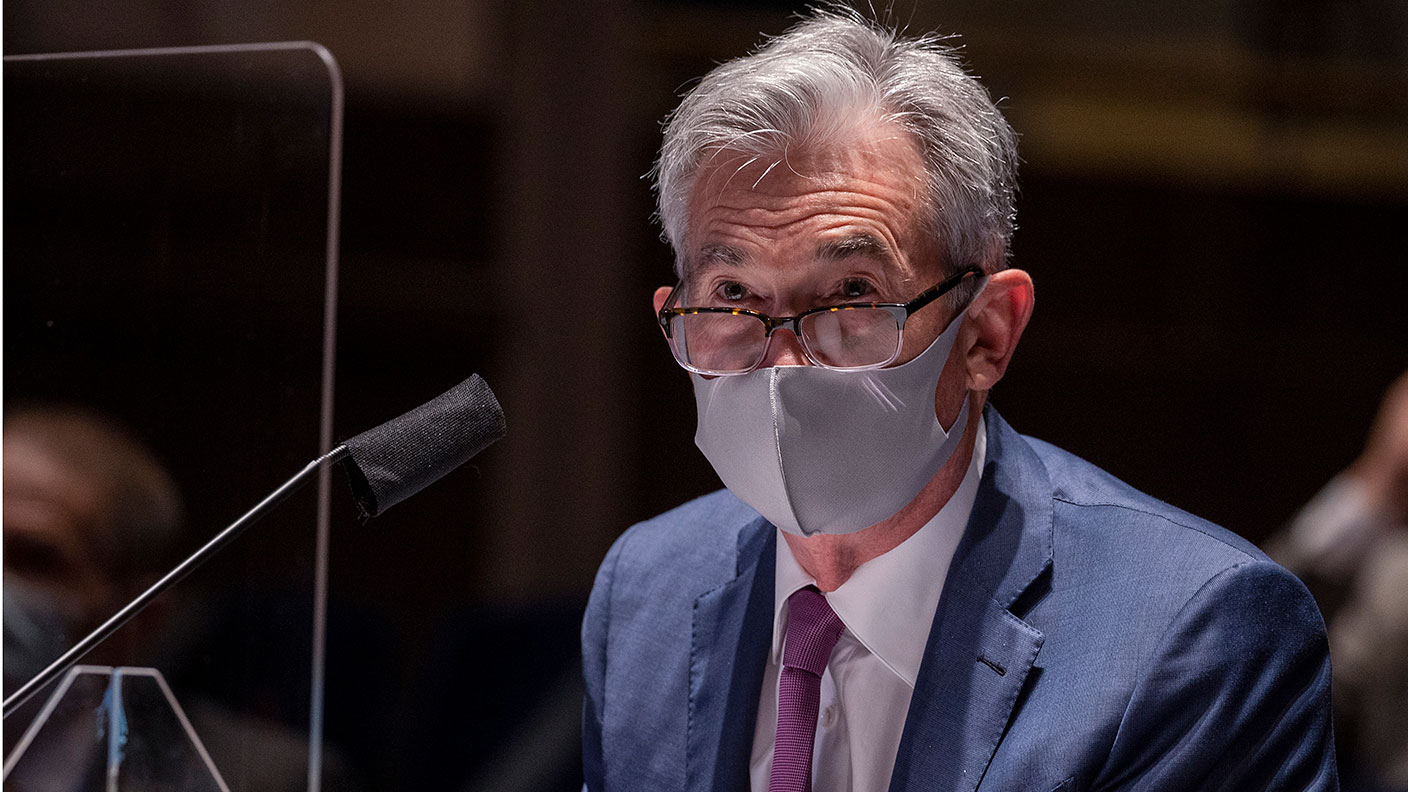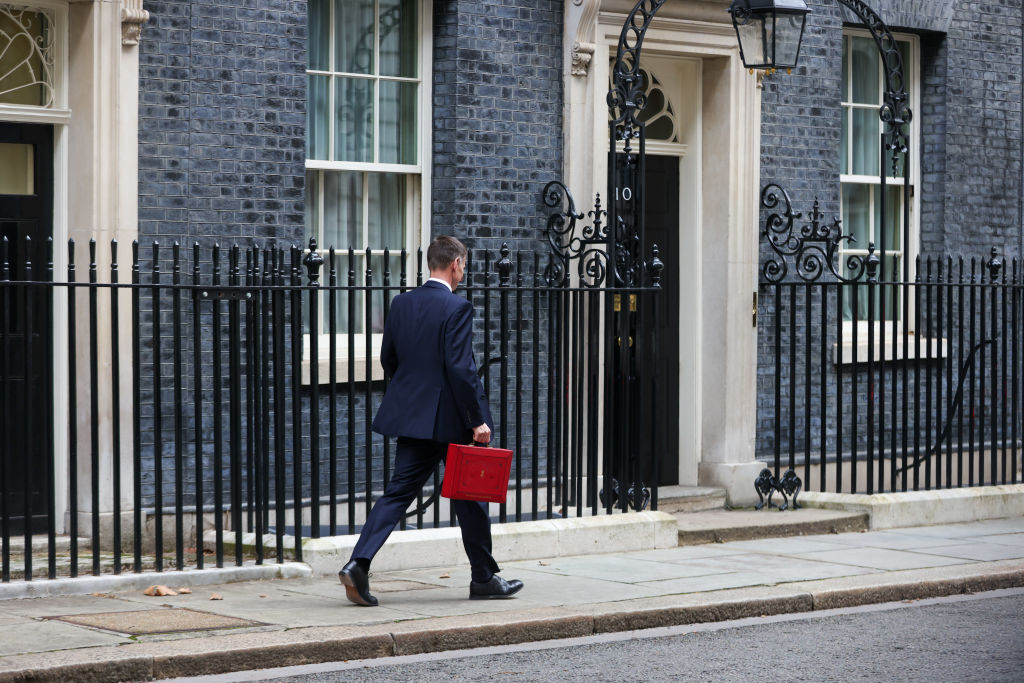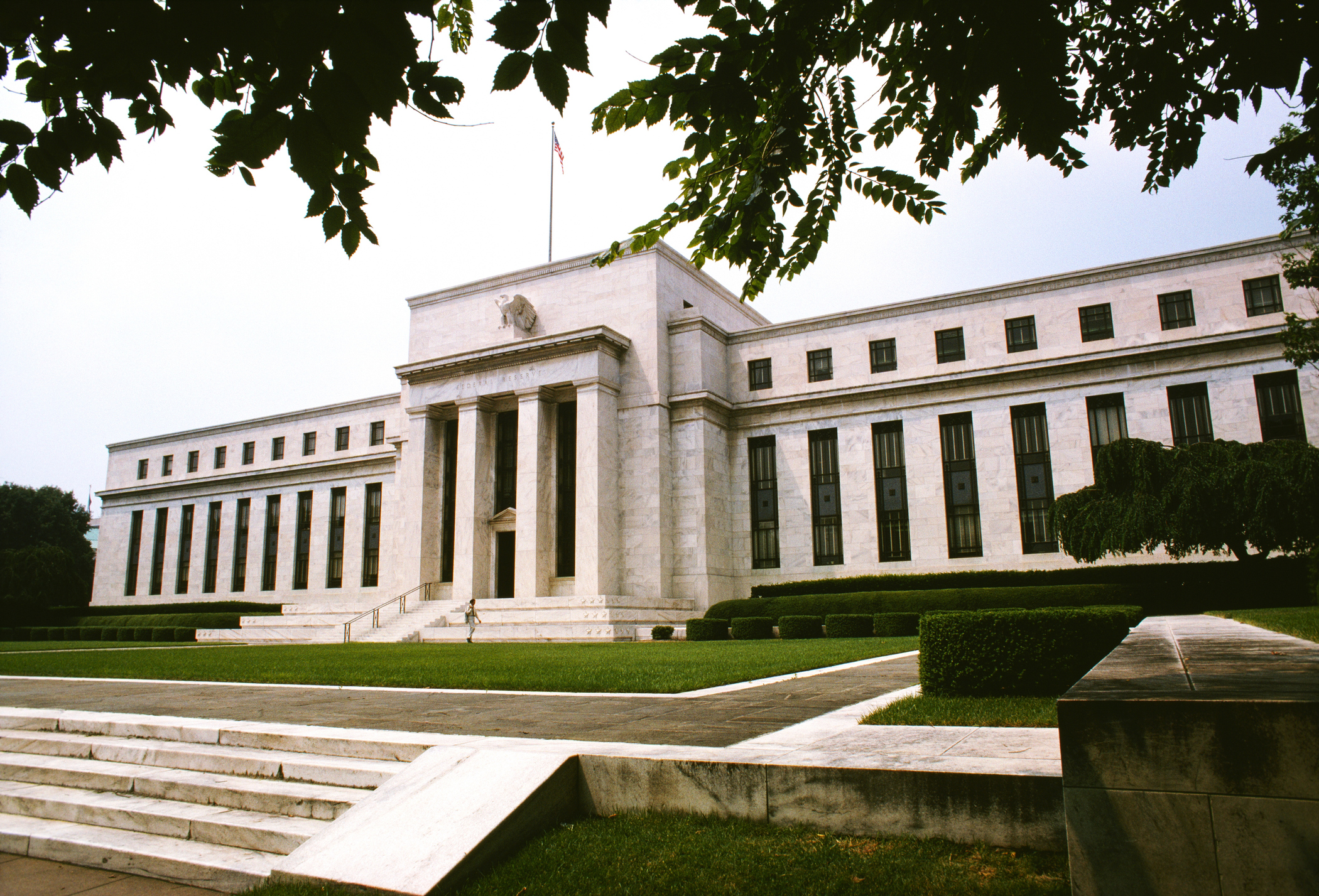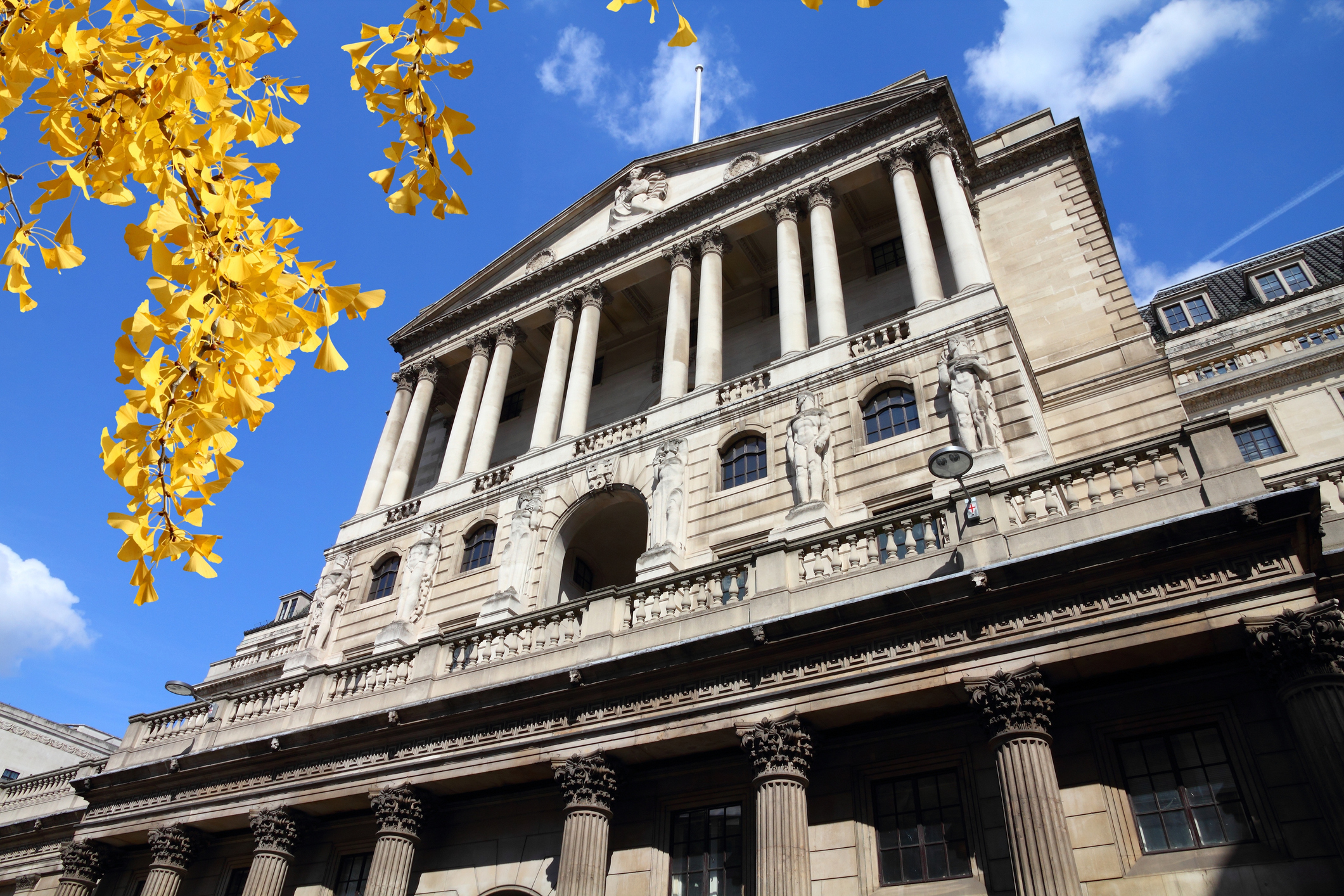What will the US central bank do next?
As the US continues to grapple with the Covid pandemic, the Federal Reserve will meet to decide what to do next on jobs, inflation and the recovery in general. John Stepek looks at its options.


We have another big Federal Reserve meeting this week. So far the Fed – America’s central bank – has printed a tonne of money and just about abolished bankruptcy. What might it do for its next trick?
The US recovery still hangs in the balance
So what might the Federal Reserve say at the end of play tomorrow?
In the circumstances, it’s very hard to see the US central bank being anything but dovish. On the upside for the US economy, there are signs that the “second wave” of coronavirus might be peaking (as always, the tone of the news coverage is a bit behind the data).
MoneyWeek
Subscribe to MoneyWeek today and get your first six magazine issues absolutely FREE

Sign up to Money Morning
Don't miss the latest investment and personal finances news, market analysis, plus money-saving tips with our free twice-daily newsletter
Don't miss the latest investment and personal finances news, market analysis, plus money-saving tips with our free twice-daily newsletter
In its latest update, Pantheon Macroeconomics notes that the number of new cases is no longer rising in the US. In the week to last Sunday, the number of weekly new cases fell for the first time since 12 June. Hospitalisations are flattening out. “Deaths will peak over the next week or so too.” So that’s the good news.
The bad news, of course, is that the economic fallout, particularly in terms of jobs, remains extreme. Initial jobless claims rose last week. That is, the number of people applying for benefits for the first time picked up. And as Capital Economics points out, they’ve been “broadly flat for the past month”, suggesting “job losses have remained elevated as the initial strong wave of rehiring slows.”
Consumption data, meanwhile, is still in recovery mode, but it’s stopped improving. A new stimulus deal is going through the US political process right now. The Republican Party is keen to reduce emergency jobless benefit levels from $600 a week to $200 from September.
It’ll be interesting to see the effect that has. The concern that the Republicans have is that the generosity of the benefits is keeping people from returning to work.
They may have a point – it’s been widely noted that a significant number of people were making more on emergency benefits than on their original wages. No wonder some of them might not have felt a great deal of urgency to get back to work.
But it’s a bit of a gamble, and it’s quite an interesting decision to make just before the big election in November.
Anyway, regardless of all that – the point is that the recovery is by no means secure, and the last thing the Fed wants to do is to throw a spanner in the works by hinting that everything is looking promising and that it might not have to do quite as much. Particularly as, unlike the Bank of England, one of the Fed’s official aims is to keep employment up.
Two options that the Fed might consider
You might wonder, given how much the Fed has already done, what else could it possibly do at this point? But there’s always more. The obvious moves – which to an extent, are already priced into the market – are to change the inflation target, or impose yield curve control.
The idea behind changing the inflation target would be to declare formally (as opposed to informally, which has been going on for a while) that the Fed will be aiming to keep inflation above 2% for a prolonged period of time, in order to offset all the time that inflation spent below that level.
That doesn’t make a lot of sense to me – I don’t think that a lack of inflation builds up into some sort of accumulated backlog that you then need to clear. It doesn’t seem wise to decide that, just because you’ve had 1% inflation for five years, you should then aim to have, say, 5% for two years to make up for it.
But it’s not really about the logic. It’s more about convincing the market that the Fed won’t do anything about rising inflation. If the market believes that, then inflation expectations will rise, and the velocity of money (the rate at which people buy stuff) will rise, too (if people think prices will be higher tomorrow, they’ll buy today). That’s the theory.
So that’s one thing it could do. Yield curve control, meanwhile, is what the Bank of Japan has been doing for a while now. In effect, the central bank is just fixing interest rates, both in the short term and in the long term, by declaring that it will print as much money as necessary to keep rates at certain levels.
Either of these, I suspect, would be deemed preferable to negative interest rates which appear to cause confusion and unintended consequences without really helping matters much.
However, I can’t see either of them being put into place at this meeting. I think the Fed might just hint at it rather than making any big moves at this meeting.
Indeed, as the perception grows that the Fed is simply planning to enable the government to spend as much as it wants, by printing lots of money, we may find that the central bank decides to push back against it. I suspect the Fed may be watching both the US dollar and the recent surge in gold prices with a little bit of concern on that front.
But any such pushback is far more likely to be verbal than real, and it’s also far too risky in terms of upsetting the apple cart right now to even hint at tighter money or a stronger dollar.
What does this mean? As always, in the short run, it’s impossible to say. I can’t see the Fed pulling out any more bazookas or fireworks tomorrow. The market might even find that a bit disappointing.
But in the longer run, we’re still firmly on the road to lower “real” rates (ie, interest rates after inflation). That’s still good for gold, yes. And in the nearer term, it’s not bad for equities either. Bonds will lose you money in “real” terms – but the central bank will be holding yields down for a while yet, so there’s probably no rush for the exit just yet.
In short, stick with your plan. And if you haven’t got one, use the current period of breathing space to figure one out. Subscribe to MoneyWeek if you haven’t already – get your first six issues free here.
Get the latest financial news, insights and expert analysis from our award-winning MoneyWeek team, to help you understand what really matters when it comes to your finances.
John Stepek is a senior reporter at Bloomberg News and a former editor of MoneyWeek magazine. He graduated from Strathclyde University with a degree in psychology in 1996 and has always been fascinated by the gap between the way the market works in theory and the way it works in practice, and by how our deep-rooted instincts work against our best interests as investors.
He started out in journalism by writing articles about the specific business challenges facing family firms. In 2003, he took a job on the finance desk of Teletext, where he spent two years covering the markets and breaking financial news.
His work has been published in Families in Business, Shares magazine, Spear's Magazine, The Sunday Times, and The Spectator among others. He has also appeared as an expert commentator on BBC Radio 4's Today programme, BBC Radio Scotland, Newsnight, Daily Politics and Bloomberg. His first book, on contrarian investing, The Sceptical Investor, was released in March 2019. You can follow John on Twitter at @john_stepek.
-
 My 6.5% Nationwide regular saver is due to mature - what are my options?
My 6.5% Nationwide regular saver is due to mature - what are my options?Nationwide’s 6.5% regular saver is due to mature for those who opened one last year. Here is what you can do now to make the most of your savings
-
 Leading European companies offer long-term growth
Leading European companies offer long-term growthOpinion Alexander Darwall, lead portfolio manager, European Opportunities Trust, picks three European companies where he'd put his money
-
 What's behind the big shift in Japanese government bonds?
What's behind the big shift in Japanese government bonds?Rising long-term Japanese government bond yields point to growing nervousness about the future – and not just inflation
-
 UK wages grow at a record pace
UK wages grow at a record paceThe latest UK wages data will add pressure on the BoE to push interest rates even higher.
-
 Trapped in a time of zombie government
Trapped in a time of zombie governmentIt’s not just companies that are eking out an existence, says Max King. The state is in the twilight zone too.
-
 America is in deep denial over debt
America is in deep denial over debtThe downgrade in America’s credit rating was much criticised by the US government, says Alex Rankine. But was it a long time coming?
-
 UK economy avoids stagnation with surprise growth
UK economy avoids stagnation with surprise growthGross domestic product increased by 0.2% in the second quarter and by 0.5% in June
-
 Bank of England raises interest rates to 5.25%
Bank of England raises interest rates to 5.25%The Bank has hiked rates from 5% to 5.25%, marking the 14th increase in a row. We explain what it means for savers and homeowners - and whether more rate rises are on the horizon
-
 UK inflation remains at 8.7% ‒ what it means for your money
UK inflation remains at 8.7% ‒ what it means for your moneyInflation was unmoved at 8.7% in the 12 months to May. What does this ‘sticky’ rate of inflation mean for your money?
-
 Would a food price cap actually work?
Would a food price cap actually work?Analysis The government is discussing plans to cap the prices of essentials. But could this intervention do more harm than good?
